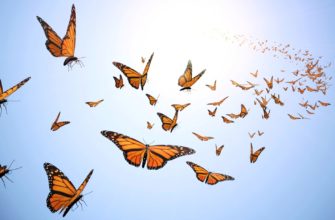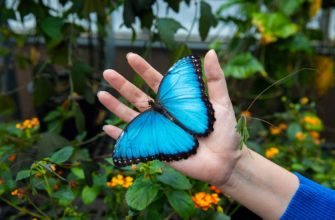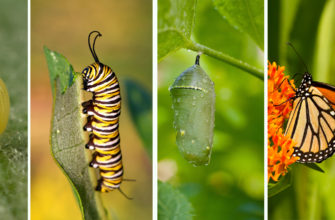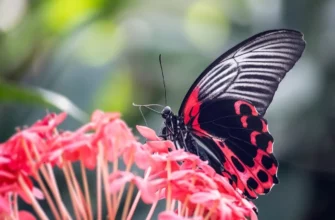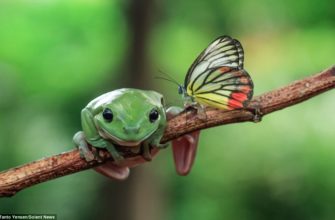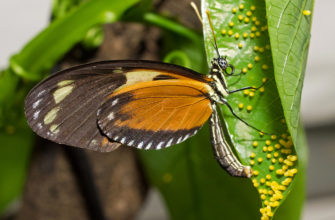Introduction: Understanding the importance of attracting butterflies
Butterflies are not only a beautiful sight to behold but also play a major role in pollination and the overall health of ecosystems. Therefore, attracting butterflies is crucial. Understanding how to attract them involves creating an environment that provides both food and shelter for these fluttering creatures.
To start with, planting native flowering plants such as milkweed, goldenrod, and asters can be beneficial. These plants provide nectar for adult butterflies while also acting as hosts for their larvae. Providing water sources with damp patches of soil or small shallow ponds can also help attract butterflies.
In addition to the above suggestions, incorporating salvia plants in your garden may attract butterflies. Salvia has brightly colored flowers that produce nectar, which adult butterflies feed on. Moreover, it’s easy to grow and maintain which makes it an ideal addition to any butterfly garden.
It’s important to note that avoiding the use of pesticides is crucial as they can harm both adult butterflies and their larvae. Additionally, providing different heights of vegetation in your garden can create microclimates that offer shade and protection from harsh weather.
Overall, understanding how to attract butterflies is vital in maintaining healthy ecosystems. Planting native flowering plants, creating water sources, avoiding pesticides and adding salvia plants are simple yet effective ways to do so. Having butterflies in your garden not only adds beauty, but also gives you a legitimate excuse for running around with a butterfly net like a lunatic.
Benefits of having butterflies in your garden
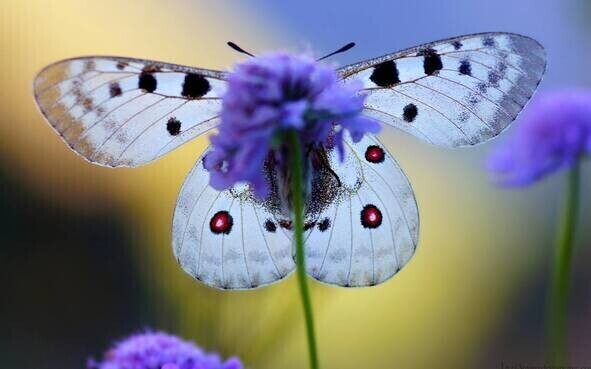
Attracting butterflies to your garden can have a positive impact on the ecosystem and aesthetics. You can increase pollination, provide food, and create a beautiful environment with their presence.
Benefits of having butterflies in your garden include:
- Increased pollination of flowers and crops
- Butterflies act as natural pest control by preying on harmful insects
- Their presence can enhance the overall beauty of your garden
Besides their beauty and benefits, butterflies also exhibit unique behavior. They use sight, touch, and smell to communicate with each other and navigate through their environment. Attracting them to your garden can provide an opportunity to observe their fascinating interactions.
According to the Smithsonian National Museum of Natural History, some butterflies can migrate up to 3,000 miles. This is an impressive feat that showcases the strength and endurance of these delicate creatures.Without pollinators, we’d be as barren as a desert in a drought – it’s time to give these winged cupid’s a little more credit.
Importance of pollination
Pollination plays a vital role in the ecosystem by facilitating fertilization and seed production, leading to biodiversity. It involves the transfer of pollen from one flower to another, either by self or external agents such as bees, butterflies, and moths. The process ensures crop yields, elevated food security and contributes significantly to the world’s economy.
Butterflies are essential pollinators that add aesthetic value to gardens. They collect nectar from flowers while transferring pollen between them. Thus they ensure effective pollination that leads to healthier plants and increase their yield productivity. Their presence helps improve visual appeal making it a desirable spot for tourists too.
Additionally, having butterflies in gardens promote balance in ecosystems as they act as prey for birds and small mammals. Moreover, caterpillars provide nutrition source for other species like ants, spiders and praying mantis. A fact supported by CABI is that “In 2009 alone in the US state of Florida, butterflies were estimated to generate just under $29 million through ecotourism.”
Overall having a butterfly garden helps increase biodiversity which is critical for a sustainable future.
Having butterflies in your garden is like having a rockstar in your ecosystem – they attract all the fans (i.e. other insects) and make everything a little more lively.
Role in the ecosystem

Butterflies play a crucial role in maintaining the balance of the ecosystem by providing nectar for pollination and serving as a food source for birds and other insect species. Their presence helps in maintaining biodiversity and they act as bioindicators to assess environmental changes.
These delicate creatures are also important in the food chain as they are part of the diet of many predators. They provide a vital link between plants and animals, ensuring that nutrients are transferred throughout the ecosystem. Butterflies help enrich the soil by contributing to decomposition, improving soil quality for plants to grow.
Not only do they contribute to nature’s beauty with their colorful patterns, but they also offer numerous benefits to gardeners by attracting pollinators and acting as natural pest controllers. Planting butterfly-friendly plants like milkweed, sunflowers, and asters can help attract them to your garden while providing shelter and breeding habitats.
It is essential to avoid using pesticides and herbicides that can harm or kill butterflies in your garden. Also, conserving natural habitats such as wildflower meadows aids butterfly conservation efforts. By planting native plants and providing a suitable environment, you can actively participate in preserving this essential part of our ecosystem.
“Trying to attract butterflies with anything other than salvia is like trying to attract a vegan with a steak.”
How salvia attracts butterflies

Salvia is a plant that attracts butterflies with its vibrant colors and sweet nectar. The bright colors and unique shapes of the flowers, such as trumpet or cone-shaped, are easily visible to the butterflies. The sweet nectar produced by the salvia flowers serves as a source of food for the butterflies. The scents of some salvia species also play a significant role in attracting butterflies. The scent of salvia is known to attract a wide variety of butterfly species.
In addition to attracting butterflies, salvia is also beneficial for the environment. It is a great addition to gardens and landscapes, providing a source of food for bees and other pollinators. Salvia also requires minimal maintenance, making it a hassle-free plant for gardeners.
Pro Tip: Plant salvia in sunny areas with well-drained soil and water regularly for the best results.
Salvia: the plant that’s more attractive to butterflies than your ex’s Instagram feed.
Characteristics of salvia plants
Salvia plants possess unique characteristics that attract butterflies. These characteristics serve as a crucial factor in creating an environment conducive for butterfly attraction.
- Salvia plants come in various vibrant colors such as red, blue, pink and purple.
- They produce aromatic nectar with high sugar content which butterflies crave.
- Salvia plants bloom throughout the summer season, providing a significant source of nectar for butterflies.
- Their tubular flowers provide an easy landing platform for butterflies to rest and consume nectar.
- Salvia plants commonly grow in sunny areas with well-drained soil, attracting different species of butterflies.
- Their upright habit allows more sunlight exposure and easier access to nectar compared to other plants.
In addition, salvia plants require minimal maintenance compared to other butterfly-attracting plants such as milkweed or coneflower.
A true story worth sharing is how a gardener from Texas noticed an increase in butterfly activity after planting several salvia plants in her garden. She noticed different species of butterflies flocking to the garden, and even rare sightings of monarchs during fall migration – all thanks to the attractive characteristics of salvia plants.
Overall, salvia plants serve as an essential contribution towards butterfly conservation efforts due to their unique characteristics.
Just like a club promoter, salvia knows exactly how to lure in the party animals (aka butterflies) with its sweet nectar.
How salvia produces nectar that attracts butterflies

Salvia produces a sweet nectar that lures butterflies, providing them with sustenance and ensuring pollination. Its nectar contains sugar and amino acids, providing the necessary calories and essential nutrients for these beautiful insects. The bright colors of salvia encourage pollinator activity while simultaneously shielding its reproductive organs from destructive insects.
Interestingly, the nectar of salvia plants is produced in specialized glands known as nectaries, which are located in different positions in specific plant species. While some species have hermaphroditic flowers with nectaries on different parts of them, others have separate male and female flowers or even separate nectary-bearing structures altogether.
These plants have managed to thrive because their unique adaptations have led to success in attracting pollinators. Such examples leave us awe-inspired by the strange but marvelous attributes of nature.
In the wilds of South America is where a young boy named Demetrius came across a stunning butterfly attracted to a nearby patch of Salvia flowers. Demetrius watched the butterfly flit from bloom to bloom before perching itself atop one lone plant, sipping its sweet nectar contentedly as he gazed upon it admirably. This moment inspired him to research more about how salvia attracts these regal creatures so effectively.
Butterflies may flutter to and fro, but with these other plants, they’ll stick around like a loyal lover.
Other butterfly-attracting plants to complement salvia
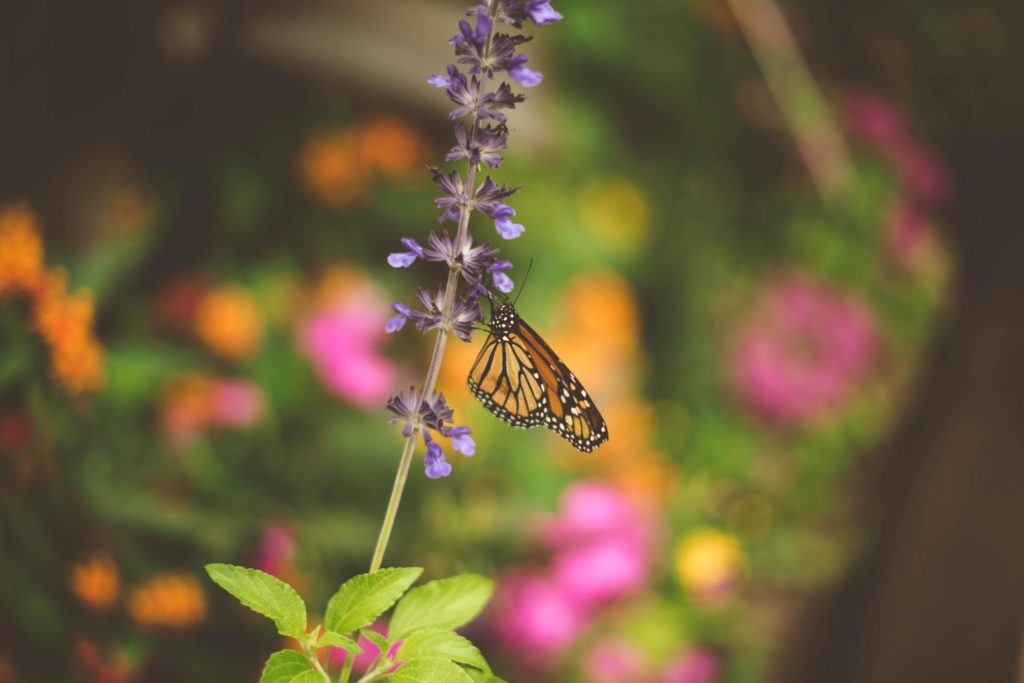
Paragraph 1 – Seeking to complement the butterfly-attracting qualities of Salvia? Here are some other plants that will appeal to butterflies.
Paragraph 2 – Some butterfly-friendly plant options that pair well with Salvia include:
- Milkweed, a host plant for monarch butterflies
- Lantana, which attracts a variety of butterfly species
- Purple Coneflower, a favorite of pollinators including butterflies
Paragraph 3 – For a diverse butterfly garden, try incorporating plants that bloom at different times of the year and offer varied colors and textures. Consider butterflies’ preferred nectar sources when selecting additional plant varieties.
Paragraph 4 – To attract more butterflies to your garden, avoid pesticides and chemicals, which can harm or deter them. Instead, try organic methods such as companion planting and hand-picking pests.
Move over, kale. Milkweed is the new superfood of the butterfly world.
Milkweed
A plant variety that attracts butterflies to your garden is Asclepias. It is a great option if you want to contribute to butterfly conservation efforts. This plant bears bright clusters of undulating flowers and is named after Asclepius, the Greek god of medicine. Furthermore, Asclepias plants host monarch butterfly larvae as they are the only food source for them. Monarchs lay their eggs on the underside of its leaves so that when hatched, the larvae can feast on them. As the larvae grow into monarchs, they have become an integral part of the conservation efforts while adding beauty to your garden at the same time.
If you want to attract butterflies, coneflowers are the wingman you never knew you needed.
Coneflower
The perennial plant commonly known as ‘purple coneflower’ is a great addition to any butterfly-attracting garden. Its scientific name, Echinacea purpurea, is better recognized for its medicinal properties rather than its aesthetic value.
To provide more details on the beauty and utility of this plant, a table can be created with appropriate columns such as Height, Bloom Time, USDA Hardiness Zones, Soil Types and Light Requirements.
| Height | Bloom Time | USDA Hardiness Zones | Soil Types | Light Requirements |
|---|---|---|---|---|
| Can grow up to 3 feet tall | Blooms from June to September | Zones 3-9 | Prefers loamy soil | Full sun exposure |
Echinacea purpurea can grow up to 3 feet tall, blooms from June to September in zones 3-9 and prefers loamy soil with full sun exposure.
While many know that Echinacea purpurea serves as an immune-booster when consumed medicinally, the plant’s nectar-rich flowers also make it a valuable source of food for butterflies and other pollinators. Using this fact in reference to a study by The Xerces Society for Invertebrate Conservation can emphasize the importance of preserving habitats that are conducive for such creatures.
By adding coneflower to the garden space and understanding its requirements for healthy growth, one can contribute positively towards balancing the ecosystem while also enjoying its vibrant purple petals.
Black-eyed Susan: the flower equivalent of that friend who always manages to steal the spotlight, even when they’re just standing in the background.
Black-eyed Susan
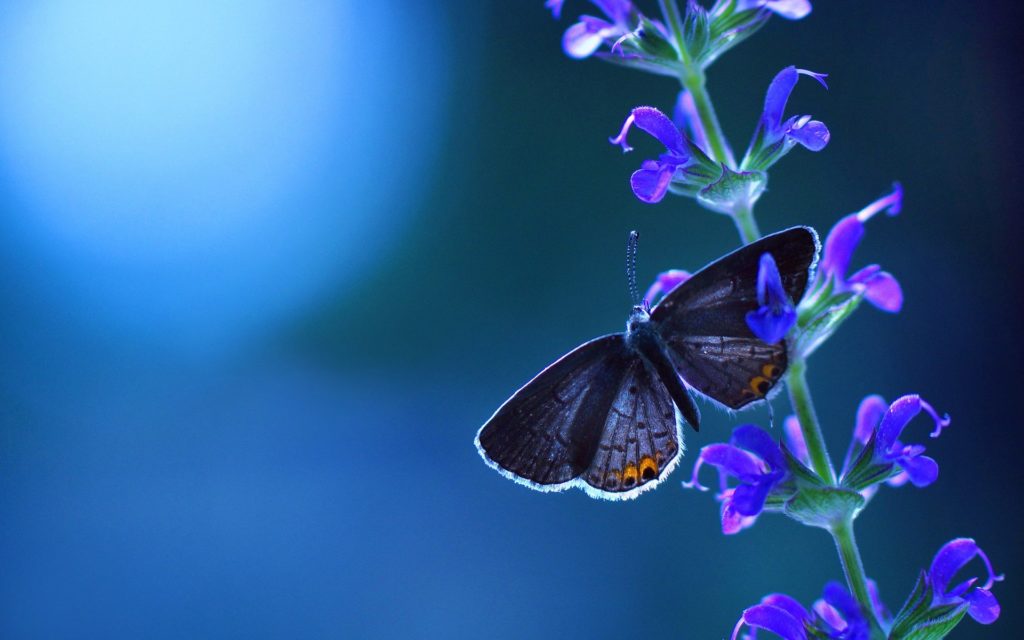
One of the top butterfly-attracting plants that can enhance your garden is the Rudbeckia Hirta, also known as the Golden Coneflower or Gloriosa Daisy. Here are some key points to know about this vibrant plant:
- The Rudbeckia Hirta is a perennial wildflower native to North America and commonly found in prairies and meadows.
- It is known for its striking golden-yellow petals with dark brown centers, giving it a distinctive “black-eyed” appearance.
- The plant can grow up to 3 feet tall and 2 feet wide, making it an impressive addition to any garden or landscape.
- It prefers full sun exposure and well-draining soil, but can tolerate some light shade.
- In terms of care, the Rudbeckia Hirta requires moderate watering and occasional deadheading to promote continuous blooming throughout the summer months.
- Besides attracting butterflies, it also attracts other pollinators such as bees and birds.
It’s worth noting that although the Rudbeckia Hirta is commonly referred to as a “daisy,” it actually belongs to the Asteraceae family alongside other popular flowering plants like sunflowers and chrysanthemums.
When selecting companion plants to complement your Salvia species, consider incorporating other butterfly-friendly options like milkweed, fennel, or bee balm. These plants also offer unique benefits for pollinators while adding visual interest and variety to your garden.
As for its history, Native American tribes used various parts of Rudbeckia Hirta for medicinal purposes such as relieving respiratory ailments and stimulating appetite. Today, it remains a beloved ornament in gardens across North America.
Create a butterfly-friendly garden by putting out a welcome mat and offering them free rent.
Tips for creating a butterfly-friendly garden

Paragraph 1 – Enhancing your garden to attract butterflies not only adds to its beauty but also benefits the environment. By strategically planting specific flowers and plants, you can create a butterfly-friendly garden that enhances their habitat.
Paragraph 2 – There are a few simple tips for creating a garden to attract butterflies. Planting native flowering plants in clumps and providing water sources can help support the butterfly life cycle. Also, adding some host plants like milkweeds can attract caterpillars and provide a food source. Lastly, avoiding pesticides and choosing organic methods can help maintain a healthy ecosystem.
Paragraph 3 – A butterfly garden can be improved by incorporating features that captivate butterflies. For instance, installing a butterfly feeder or creating a sheltered space with rocks and logs can provide a place for them to relax. Additionally, including a range of flower colors can attract various butterfly species.
Paragraph 4 – The idea of creating a butterfly garden can be traced back to the first butterfly observatory, established by Maria Sibylla Merian in 1705. Her work spurred an interest in understanding butterflies and their habitat, which has since led to the creation of butterfly-friendly gardens worldwide.
Who needs a bouquet of flowers when you can have a garden full of different plant varieties? Just be prepared for the jealousy of all the local butterflies.
Plant variety
Plant Diversity and Its Importance in Attracting Butterflies
To create a butterfly-friendly garden, you need to focus on diverse plant species that cater to the butterflies’ specific needs. Here are some essential points regarding plant diversity:
- Include different flowering plants for various stages of butterfly life cycle.
- Grow both nectar-rich flowers and host plants.
- Choose native plants as they attract local butterfly species.
- Vary the colors, sizes, and shapes of the flowers to attract a broad range of butterflies.
- Ensure there is a year-round blooming period by planting early-blooming and late-blooming flowers.
To further increase the chances of butterflies visiting your garden, consider clustering flowers of the same species as they tend to attract more butterflies.
Pro Tip: Don’t use pesticides as they harm not only pests but also beneficial insects such as butterflies.
Help your butterflies stay hydrated by setting up a spa-like water station, complete with pebbles for perching and mini umbrellas for shade.
Provide a water source
Butterflies need water to drink and to regulate their body temperature. Ensuring a consistent water source in your butterfly-friendly garden is crucial in attracting and maintaining these beautiful creatures.
Here are four ways you can provide a water source in your garden for butterflies to enjoy:
- Set up a small pond or fountain. Butterflies are attracted to the sound of trickling water, and will come to investigate.
- Create a shallow basin filled with rocks or pebbles that you regularly top up with fresh water. This allows for butterflies to ‘perch’ safely while they take sips of water.
- Place saucers of wet sand or mud around your garden. This provides not only a place for drinking but also gives female butterflies somewhere to lay their eggs.
- Add moisture holding plants like ferns, mosses, and hostas around shady parts of your garden.
It’s important to keep the water source clean by regularly changing the water, preventing it from becoming stagnant or breeding grounds for mosquitoes.
Another unique way to provide a reliable water source is by installing specialized butterfly watering stations. These small units allow you to control the amount of fresh water provided and minimize waste by avoiding spills.
Providing a diverse range of clean, accessible sources of moisture benefits butterfly populations greatly. Consider using an automatic irrigation system on timers specifically designed for this purpose if possible. With all these measures in place, you can be sure that your butterfly-friendly garden will remain vibrant and welcoming!
Can’t have a butterfly-friendly garden if they’re all dying from pesticide poisoning, unless you want to attract zombie butterflies.
Avoid pesticides
Eliminating chemical insecticides can be a vital step in creating a garden which is conducive to butterfly growth and development. Many pesticides have toxic ingredients, which can have an adverse impact upon the reproductive potential of butterflies. Insecticides may also lead to decimating populations of pollen-carrying insects including bees, thereby affecting the integrity and structure of ecosystems.
To substitute insecticides, utilize natural predators such as ladybugs or praying mantis instead of utilizing chemical substances to control pest species. There are many home remedies and organic products with low toxicity levels available if your caterpillar population is infested with destructive pests. Covering plants with floating row covers or choosing resistant crops is another option.
To further make your garden butterfly friendly, you should refrain from employing birdhouses or feeders amid pollinator plants. The presence of these structures can attract small mammals like rodents, which may feed on butterfly larvae and eggs.
Interestingly, some butterflies have evolved vibrant colours to alert predators that they are potentially dangerous. For example, monarch butterflies consume milkweed leaves during their larval stage rendering their bodies poisonous to vertebrate predators who would avoid consuming them after one bite.
Source: https://www.bhg.com/gardening/design/nature-lover/how-to-create-a-butterfly-garden/
Don’t be a moth to a flame, be a butterfly to a salvia plant.
Conclusion: The importance of attracting butterflies and how salvia can help.
Attracting butterflies to your garden can not only beautify it but also aid in pollination and maintain a healthy ecosystem. Salvia, with its appealing nectar-rich flowers and easy-to-grow nature, is a great way to attract butterflies. Its colorful blooms attract various species of butterflies, making it an essential source of food for their survival.
Planting salvia in your garden can also serve as a refuge for them from predators while providing enough habitat for their reproduction and continued presence. In addition, salvia’s long flowering period makes it an ideal perennial for attracting butterflies throughout the growing season. With so many different cultivars, gardeners can choose the perfect type that matches their landscape and planting need. It’s crucial to have enough space between plants to provide ample breathing room for butterflies and larger animals like bees.
Aside from salvia, other factors are considered when trying to attract more butterflies into the garden such as water sources and sheltered areas; providing low-growing shrubs that serve as hiding places ensures that they remain secure. Additionally, plants should be situated in areas with full sun exposure where they receive plenty of light.
According to the North American Butterfly Association (NABA), over 700 butterfly species exist across North America alone today; attracting them with Salvia will be immensely beneficial for caterpillars consumption on leaves, which is one evolutionary achievement we need not overlook.
Frequently Asked Questions
Q: Does Salvia attract butterflies?
A: Yes, Salvia is a popular choice among gardeners and butterfly enthusiasts because it is known to attract butterflies.
Q: What type of butterflies are attracted to Salvia?
A: Salvia is known to attract a variety of butterfly species such as monarchs, swallowtails, fritillaries, and skippers.
Q: What is the best way to plant Salvia to attract butterflies?
A: Salvia should be planted in a sunny location with well-draining soil. It is also helpful to plant Salvia in groups or clusters as this makes it easier for butterflies to find the plants.
Q: When should I plant Salvia to attract butterflies?
A: Salvia can be planted in the spring or fall to attract butterflies. It is best to plant in the spring in cooler climates and in the fall in warmer climates.
Q: Can Salvia be grown in a container to attract butterflies?
A: Yes, Salvia can be grown in a container as long as it has enough space for the roots to grow and adequate drainage. It is also important to place the container in a sunny location.

